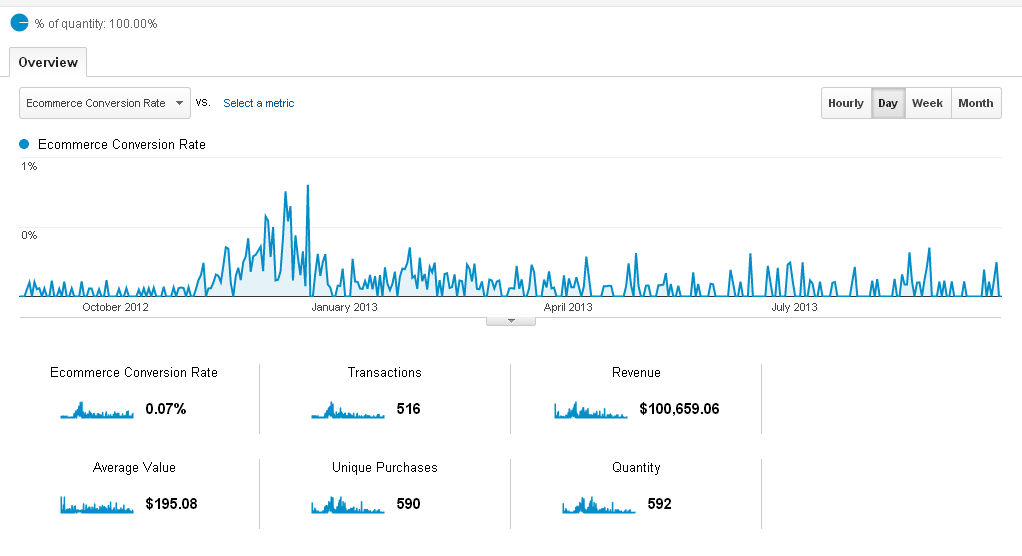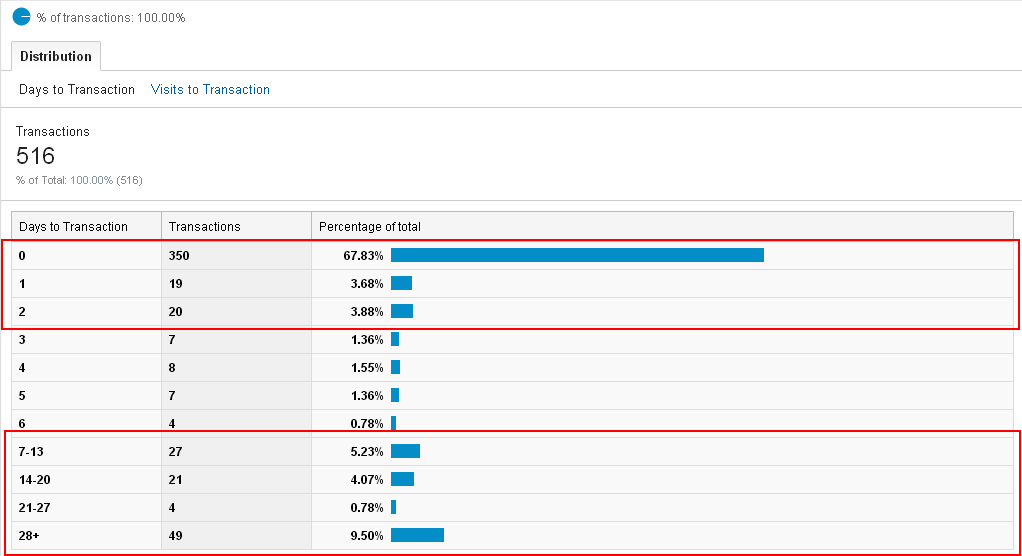Running ecommerce SEO campaigns and maintaining ecommerce sites requires you to look at a very specific set of performance indicators. You’ll need to modify some descriptions of the standard KPIs measured in all websites, and add a few specific performance indicators in your list of things to track. I want to share some of the KPIs you need to measure to determine how well your ecommerce sites are performing.
Conversion Rate
Measuring the conversion rate is important in any campaign, but it is even more important in ecommerce campaigns. Every conversion goal completed on your client’s ecommerce website is a potential sale, and sales are the most important conversions of all. You’ll need to check a few things:
- The amount of new site traffic your campaign receives every month
- The number of conversions you get vs. the number of overall traffic you receive
- The conversions from the previous month vs. the conversions for the current month (in order to estimate how the new traffic contributed to your conversions
- The revenue you make, and the average value of each sale (for comparison with your total expenses)
- The number of unique purchases you get
If you see your conversions not improving, you should check the exit pages tracked in Analytics. Optimizing these pages to be more appealing and friendly to your audience can help increase your conversions. Check your general site structure as well – your audience may be having a hard time finding your products and services if your product pages are not well-organized.
Mobile Conversion Rates
It’s important to set mobile conversions apart from desktop conversions because these are affected by a whole set of different factors. Since most ecommerce sites attract mobile readers, tracking this separately will help you address the more specific needs of mobile consumers.
Analytics allows you to track mobile visitors and conversions. Turn this feature on and track your visitors, purchase rates, and other conversion factors. You’ll see higher traffic and conversions if your site is optimized for mobile. Make sure to use mobile-friendly design when creating ecommerce websites for your clients. Responsive web design will make it much easier for your products to display properly on mobile.
Days to Purchase
Examining consumer behavior is a great way to help you optimize ecommerce websites to increase sales and consumer loyalty. Tracking the number of days it takes for your visitors to complete the buying process is a great KPI to measure. This allows you to study audience behavior and design your ecommerce websites around their actions. You can find this feature under the Conversions tab of Google Analytics, named “Time to Purchase”.
In-Page Activity Tracking
In order to know what specific on-page elements work in converting your visitors into customers, you’ll need to look at their in-page activity and track different events on your landing pages. Heat maps that track where users click are a good way of measuring the effectiveness of a specific on-page element.
Visitor Loyalty
A visitor who comes back regularly is likely a loyal customer, and this is what you want to happen with ecommerce sites – to have a loyal following and create brand ambassadors through these people. It’s important to apply a filter to exclude new visitors from the total visitor frequency count, because you want to accurately measure the amount of returning traffic you receive.
Talk to us today to begin developing well-optimized ecommerce websites and track your campaign performance accurately through our ecommerce SEO. Contact your account manager to know more or sign up now to become our partner. This concludes another entry, and do keep checking back for more updates and tips from us!




